List of plant genus names with etymologies (L–P)

Since the first printing of Carl Linnaeus's Species Plantarum in 1753, plants have been assigned one epithet or name for their species and one name for their genus, a grouping of related species.[1] Many of these plants are listed in Stearn's Dictionary of Plant Names for Gardeners. William Stearn (1911–2001) was one of the pre-eminent British botanists of the 20th century: a Librarian of the Royal Horticultural Society, a president of the Linnean Society and the original drafter of the International Code of Nomenclature for Cultivated Plants.[2][3]
The first column below contains
seed-bearing genera from Stearn and other sources as listed, excluding those names that no longer appear in more modern works, such as Plants of the World by Maarten J. M. Christenhusz (lead author), Michael F. Fay and Mark W. Chase.[4] Plants of the World is also used for the family and order
classification for each genus. The second column gives a meaning or derivation of the word, such as a language of origin. The last two columns indicate additional citations.
Key
- Latin: = derived from Latin (otherwise Greek, except as noted)
- Ba = listed in Ross Bayton's The Gardener's Botanical[5]
- Bu = listed in Lotte Burkhardt's Index of Eponymic Plant Names[6]
- CS = listed in both Allen Coombes's The A to Z of Plant Names[7] and Stearn's Dictionary of Plant Names for Gardeners
- G = listed in David Gledhill's The Names of Plants[8]
- St = listed in Stearn's Dictionary of Plant Names for Gardeners
Genera


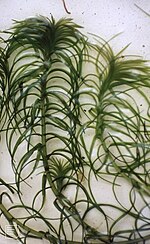



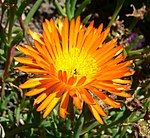
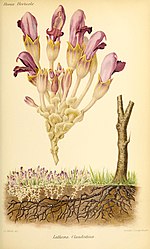






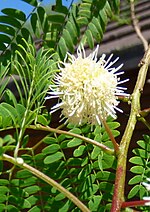









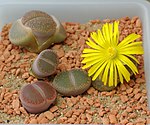





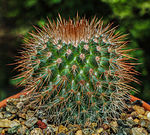























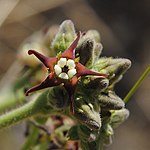
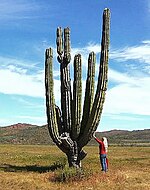














See also
- Glossary of botanical terms
- List of Greek and Latin roots in English
- List of Latin and Greek words commonly used in systematic names
- List of plant genera named for people: A–C, D–J, K–P, Q–Z
- List of plant family names with etymologies
Notes
- ^ The arrow provides a link to the table row for the given genus.
- ^ Page numbers for references are omitted, since all the references list genera alphabetically except for Plants of the World, which is mainly cited for genera that match their family names.
- ^ "(Language) name" means the name of some plant originally, not necessarily in this genus.
- ^ This list includes fictional and unattested characters; also see List of plant genera named for people (K–P).
Citations
References
- Bayton, Ross (2020). The Gardener's Botanical: An Encyclopedia of Latin Plant Names. Princeton, New Jersey: Princeton University Press. ISBN 978-0-691-20017-0.
- Burkhardt, Lotte (2018). Verzeichnis eponymischer Pflanzennamen – Erweiterte Edition [Index of Eponymic Plant Names – Extended Edition] (pdf) (in German). Berlin: Botanic Garden and Botanical Museum, Freie Universität Berlin. for license.
- Christenhusz, Maarten; Fay, Michael Francis; Chase, Mark Wayne (2017). Plants of the World: An Illustrated Encyclopedia of Vascular Plants. Chicago, Illinois: Kew Publishing and The University of Chicago Press. ISBN 978-0-226-52292-0.
- Coombes, Allen (2012). The A to Z of Plant Names: A Quick Reference Guide to 4000 Garden Plants. Portland, Oregon: Timber Press. ISBN 978-1-60469-196-2.
- Cullen, Katherine E. (2006). Biology: The People Behind the Science. New York, New York: Infobase Publishing. ISBN 978-0-8160-7221-7.
- Gledhill, David (2008). The Names of Plants. New York, New York: Cambridge University Press. ISBN 978-0-521-86645-3.
- ISSN 0024-4074.
- Stearn, William (2002). Stearn's Dictionary of Plant Names for Gardeners. London: Cassell. ISBN 978-0-304-36469-5.
Further reading
- Brown, Roland (1956). Composition of Scientific Words. Washington, DC: Smithsonian Institution Press. ISBN 978-1-56098-848-9.
- Lewis, Charlton (1891). An Elementary Latin Dictionary. Oxford: Oxford University Press. ISBN 978-0-19-910205-1. Available online at the Perseus Digital Library.
- Liddell, Henry George; Scott, Robert (2013) [1888/1889]. An Intermediate Greek–English Lexicon. Mansfield Centre, Connecticut: Martino Fine Books. ISBN 978-1-61427-397-4. Available online at the Perseus Digital Library.
- Quattrocchi, Umberto (2000). CRC World Dictionary of Plant Names, Volume II, D–L. Boca Raton, Florida: CRC Press. ISBN 978-0-8493-2676-9.
- Quattrocchi, Umberto (2019) [2000]. CRC World Dictionary of Plant Names, Volume III, M–Q. Boca Raton, Florida: CRC Press. ISBN 978-0-367-44751-9.
